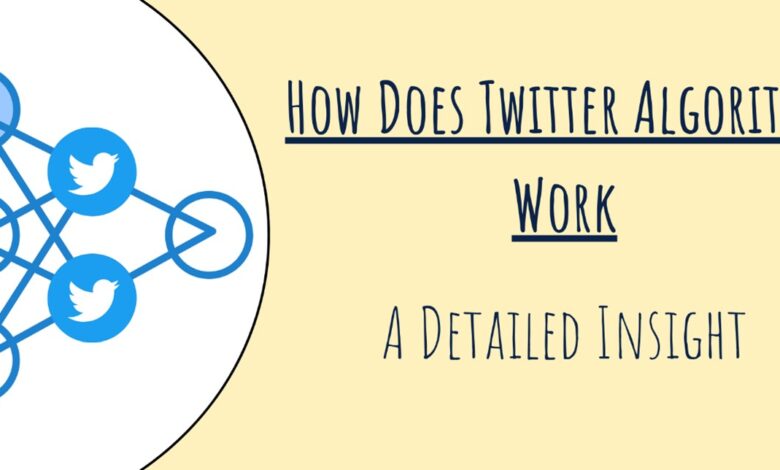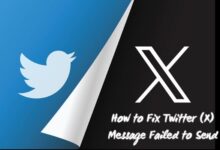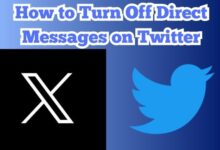How Does Twitter Algorithm Work: A Detailed Insight

Twitter has undergone a lot of changes over the years and its algorithm is among them. Giving likes, retweets, and shares possess the ability to make tweets go viral, and like a lot of other social media platforms, the algorithm is the Twitter network’s powerhouse. So, understanding the way it works is essential for one to rank his content better and get to wider audiences. Yet, you may not know how does Twitter algorithm work.
With this blog post, you’ll discover everything about the Twitter algorithm, the factors affecting it, and the way it is influencing one’s feed ranking. Also, you will learn about the right marketing strategies that can aid you in outsmarting the algorithm. Keep reading to find out!
How Does Twitter Algorithm Work?
You might be wondering, how does Twitter algorithm work. The way the Twitter algorithm works is complex. This algorithm was designed for personalizing one’s feed and delivering content that is useful for interaction on the platform. Twitter had disclosed its algorithm source code before.
Then, aside from going ahead to share its source code, the platform additionally released a blog post that detailed its recommendation algorithm. Twitter makes use of some important features that take tweets‘ information and users’ history to respond to inquiries such as, “What is trending tweets in the Community?
The Twitter network additionally disclosed its algorithm code on GitHub. They broke down the process into triple steps. The three processes constitute the “For You” we’re seeing today. Additionally, there exist some ranking signals on this popular platform.
When one understands all these, he can keep on improving his content and staying relevant on Twitter. It’s essential to comprehend Twitter’s recommendation pipeline and the way its three stages work. They are;
1. Candidate Sourcing
This is a step in which Twitter collects recent and relevant Tweets from various recommendation sources. This includes In-Network sources (similar accounts you’re following) and Out-of-Network sources (accounts you’re not following).
Out-of-Network tweets stand as more complicated and identify many tweets from accounts you’re not following while In-Network tweets arrange recent tweets from accounts you’re following. During the candidate sourcing stage, Twitter will gather optimal tweets from multiple recommendation sources.
In-network sources will compile recent tweets from any account you’re following. Sourcing Out-of-Network content remains a higher complex task because it requires going ahead to identify relevant tweets from many accounts you’re not following.
Twitter utilizes two approaches in this which are social graph and embedding space. Social graph filters tweets according to the accounts’ engagements you’re following and the ones having similar tweets. The Twitter SimClusters embedding space divides users into communities presided by influential users.
2. Ranking
This is the second process where all Tweets are ranked making use of a machine-learning model, without paying attention to whether it is an In-Network or Out-of-Network source. Twitter has not disclosed precisely the way its ranking mechanism is working.
However, according to them, they award every tweet a score that represents an engagement’s probability. In this stage, every tweet, not minding their sources, is ranked according to the machine learning model of Twitter.
3. Heuristic, Filter, and Product Feature
Applying heuristics, filters, and product features makes sure that Twitter is employing lots of features to ensure variety and balanced feeds. The heuristic, filter, and product feature additionally removes irrelevant tweet content from people you have blocked, not safe for work posts, and then a certain tweet you have viewed before. Among these include:
- Visibility Filtering: One won’t view Tweets from accounts he blocked or muted. Visibility filtering filters tweets based on a user’s tweet pairs and preferences.
- Author Diversity: This helps to prevent so many consecutive Tweets from one particular author. Author diversity makes sure that too many consecutive tweets coming from a tweet’s author aren’t shown.
- Content Balance: This involves balancing In-Network and Out-of-Network Tweets. Content balance aims to mix In-Network and Out-of-Network tweets to display.
- Feedback-Based Fatigue: This involves ranking a tweet lower when it receives negative feedback.
- Social Proof: This is ensuring that somebody you’re following engages with a Tweet and is following the author of it. Social Proof exempts Out-of-Network tweets that have not engaged the users you’re following.
- Conversation: Give replies via the original tweet thread. That will provide context for tweet replies when they’re threaded to the original.
- Edited Tweets: It involves updating one’s tweets with fresh ones to replace previous ones.
What is the Twitter Algorithm?
Twitter algorithm signifies some rules and factors determining the content appearing on the timeline of every user. The platform’s algorithm has control over the content we see and the way we view it according to different components.
This algorithm stands as a complicated system determining one’s timeline’s tweet ranking. You should buy the Twitter followers service from views4you.com because it will help you beat the algorithm and stand out on the platform. Their Twitter followers are real and active, and they will make the platform’s algorithm rank you higher.
Twitter Recommendation Algorithm
Twitter’s Recommendation Algorithm mainly concerns Twitter’s portion concerning explores, searches, and ads sections.
Twitter Algorithm Ranking Signals
Though few Twitter Metrics changes were publicly disclosed, some were disclosed at the time Elon Musk revealed the code of the algorithm.
This new algorithm emphasizes specific content types, therefore it’s essential to incorporate these into one’s Twitter strategy to appear more regularly in a user’s feed. The signals are;
Relevance
Twitter usually ranks tweets in one’s feed and pays attention to the accounts you’re following and tweets you’re replying to, liking, retweeting, etc. Twitter’s most essential factor depends on the behavior history of a few thousand users or more.
This means what content every user is engaging in. Twitter builds a profile for a user according to former actions such as that candidate’s tweet, then posts he has interacted with.
Recency
Recency is among the factors impacting Twitter’s platform algorithm. They include posts concerning trending topics, present events, and so on. This isn’t very shocking because the popularity of video content has attained on a lot of platforms since TikTok’s launch.
Useful Tips to Surpass Twitter Algorithm
We’ve listed the best tips for you to utilize to beat Twitter’s algorithm and they include;
1. Post Tweets at the Right Time
A way of reaching more users is by posting content at appropriate times. It needs to spark additional engagements and compel more users to discuss through tweet threads. In addition, utilize external links wisely anytime you post tweets.
2. Ensure Consistency
To keep one’s followers engaged, try posting once or more every day. However, don’t post more than four tweets. Nike is one example of a brand that’s constantly sharing engaging posts to keep followers engaged.
Their tweets on pop culture and other topics appear constantly on Twitter’s Home timeline tweets.
3. Utilize Tags
Always make use of trending hashtags and utilize them according to their relevance to your tweet’s content.
4. Start Leveraging Analytics Data
One should utilize Twitter Analytics to view how content is performing and other online networks. Additionally, you should be aware of Twitter’s trending topics and hashtags.
Utilize Twitter Analytics for tracking what’s working and what’s not in your account. Also, continue testing, fully understand the way one’s content performs on various social media platforms, and utilize social media management tools.
5. Partake in Relevant Trends
When one participates in relevant trends, it will enhance visibility and engagement. Twitter users have the freedom of toggling between two timelines: Home and Latest Tweet. Every one of these tabs displays trending topics and top Tweets respectively.
6. Be Verified
Based on the new rule for Twitter Blue, to be verified, users have to pay $8 per month on their web browsers or $11 per month on iOS. The price is according to one’s device usage. The platform affirmed that it’ll just verify people if they’re subscribed to Twitter Blue.
Getting verified will help you to stand out from others. Also, Twitter Blue subscribers usually enjoy extra advantages like tweets’ text formatting, being able to edit tweets, fewer ads in their “For You” timelines, etc. as disclosed by Twitter’s algorithm code.
7. Utilize Twitter Polls
Just like many social media companies, the platform likes promoting its features, therefore polls perform great in the Twitter feed algorithm. You should utilize it now for free to start growing your Twitter presence.
Conclusion
Twitter’s algorithm is complicated and keeps on changing every day, so it’s essential to remain updated. Understanding the Twitter algorithm well will help your content to stand out from that of other users and also enable you to reach your target audience. Twitter’s algorithm affects users in many ways and is a crucial factor in reaching more audiences.
You might be finding it difficult to start navigating this algorithm for bolstering your business awareness. No matter the goal you have, comprehending the Twitter algorithm is the very first step. Also, ensure that you make use of a social media management tool that will help you ease stress as you’re carrying out Twitter marketing.






